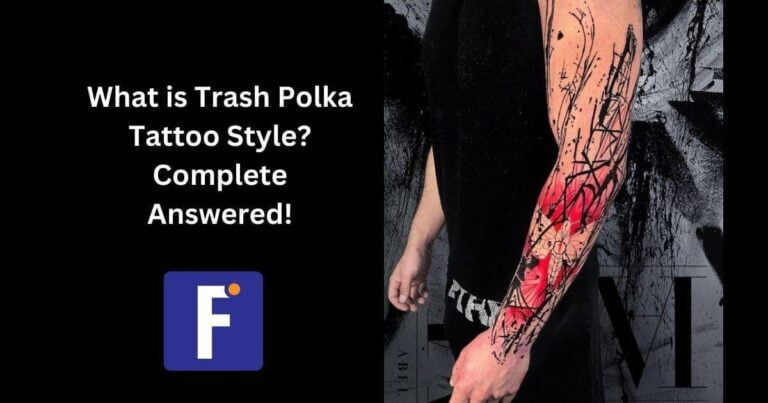Trash Polka tattoo is the black and red inked designs with the combination of realistic with the natural, surrealistic, and unique ideas. These tattoos are the creation of tattoo artists from Germany named Simone Plaff and Volker Merschky. The tattoo artists create Buena Vista Tattoo Club which is a tattoo studio. They have unique artwork, and they named their work Trash Polka. The Trash polka tattoo style became popular all over the world due to the unique combinations. Their artwork exhibits indifferent art galleries across Europe.
The original name of the realistic polka tattoo is a combination of three names. Realistic means looking at images. Trash is the graphics or design that gives the background. Polka means the combination of trash and realistic like music or with harmony. As they combine different elements, they do not want strict rules to their tattooing irrespective of color combinations. Volker Merschky learned interior design to know well about the unique design patterns. Simone Plaff learned graphic design to understand the message of drawings. They create distinctive designs and add full red colors to each design. The tattoo artists have freedom to experiment with different realistic elements like calligraphy, drawing or pictures to create the design with trash polka. It also represents the gothic elements due to restriction of colors.
Trash Polka Art Style
The trash polka shares the dark and light theme with chaotic appearance with color contrast. Tattoo artists can add different lines or do calligraphy in the portrait for a unique design. The combination of red and black gives a bold, emotional, and clear visual expression. The Trash Polka tattoo style breaks the stereotypical German tattoo designs.
The Trash Polka art style does not allow the use of other colors. Trash polka art is about dark red and Black color with free lines or patterns on realistic images. Merschky explains the nature of the trash polka as the realism and trash combination. It associates nature with abstract technology with humanity. It is not the harmony of the design with the body. The initial tattoo customers have shortage to get the tattoos like, but the design becomes available easily after becoming popular.
Realistic trash polka art is real and easily viewable without any confusion. You cannot find the direct association of the art with a single subject. The addition of elements and motifs with realistic images adds more unique elements in the design. The trash polka tattoo style looks like modern tribal tattoos with real pictures.
Aging and Placement
The red and black color fades over time but there is no exact data about the fading of the trash polka tattoo. The aging process is not easy to the area of the Trash Polka due to sun exposure. You can have a Trash Polka tattoo anywhere on your body, but this tattoo requires a large space to fit the complete portrait. The complex design is not able to fit in a small space. The arm, chest, back or full body is the best for trash polka tattoos. There are different links that require to connect well. The right placement for the trash polka tattoo is necessary to express your association with the tattoo design. Read about Celtic Tattoo History now.
Trash Polka Tattoo Meaning
These tattoos are complex to look at and not easy to understand well at first. The realistic picture is easy to understand but the messages through bold lines, contrast and calligraphy add suspense to understanding. You can add any type of realism through the tattoo and show your direct connection with it. This tattoo is the best for both men and women. You can get suggestion for the tattoo artist about trash polka design for masculine or feminine designs. The meaning of Trash Polka depends on the personal choice. It is the best medium to express emotions like passion, rebelliousness, determination, sacrifices and survival. Most people use it to express the dark emotional side like fear, anger, or revenge. The dark red color represents blood or fire. It also adds to the sense of horror and thrill to know the whole story of a specific image.
